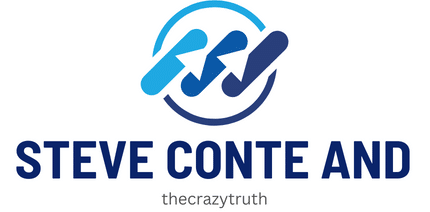How to Train a Husky to Pull a Sled in Competitive Mushering?

For centuries, humans have relied on dogs for various tasks – hunting, guarding, herding, and perhaps one of the most iconic activities: sledding. In the Arctic regions, sled dogs remain integral to transportation, and in modern times, this traditional activity has evolved into a competitive sport known as mushing. At the heart of this sport are sled dogs, with the Siberian Husky being one of the most renowned breeds. This article will guide you on how to train a Husky to pull a sled in competitive mushing, covering everything from the first time you introduce the sled to the nuances of training for races like the Iditarod.
Starting Early: The First Step to Successful Mushing
Before diving into advanced training regimes and competition tips, let’s start at the very beginning. The best time to get a Husky started in sledding is as a puppy. Although older dogs can also learn, puppies often pick up new skills faster and adapt quickly to new experiences.
A lire en complément : What’s the Best Diet for a Sphynx Cat Prone to Hypertrophic Cardiomyopathy?
Introduction to the Harness and Sled
The first step is to familiarize your Husky with the harness and sled. Show them the harness, let them sniff it, and gently put it on them. After they are comfortable with the harness, introduce them to the sled. Initially, you can pull the sled alongside them so that they get used to the sight and sound of it.
Lire également : How to Create a Daily Enrichment Schedule for a Senior Dog with Limited Mobility?
Basic Commands
Next, teach your Husky the basic mushing commands. “Hike” to start moving, “Gee” for right turns, “Haw” for left turns, and “Whoa” for stop. Reward your pup with treats and praises for each successful command followed. Repeat this process multiple times a day to help them remember the commands.
Team Building: Building a Sled Dog Team
Mushing is a team sport, and like any sport, the success of a team depends on unity and cooperation. Your Husky will be part of a dog team, each with their unique role.
Identifying the Roles
Typically, a sled dog team consists of lead dogs, swing dogs, team dogs, and wheel dogs. The lead dogs are at the front, setting the pace and responding to the musher’s commands. The swing dogs follow them, helping turn the sled around corners. The team dogs are in the middle, providing the main power, while the wheel dogs are closest to the sled, aiding in pulling and steering. Identifying where your Husky fits best in this arrangement is crucial.
Building the Team
Once you’ve identified your Husky’s role, start building the team. Start with two dogs and gradually increase the team size. Training should start with short runs, gradually increasing the distance as the dogs build their stamina.
Race Ready: Preparing for a Mushing Competition
Preparing your Husky for races such as the Iditarod requires a fine balance between physical training, mental preparation, and strategic planning.
Physical Training
Physical training is fundamental. Start with short runs, gradually increasing the distance and load as your dog’s strength and endurance improve. Be mindful of your dog’s health and adjust the training regime accordingly. Remember to provide a nutritious diet to support their physical needs.
Mental Preparation
Mushing is as much a mental game as it is a physical one. Your dog needs to be able to concentrate for extended periods and react promptly to commands. Regular training and practice runs are the best ways to enhance these skills.
Strategic Planning
Strategic planning involves understanding the race course and conditions, adjusting your training accordingly, and planning for rest, food, and hydration needs during the race. Make sure to spend time on this aspect as it can significantly impact your performance in the race.
Making Mushing Fun: Keeping Your Husky Engaged
The last aspect of training a Husky for mushing is to ensure the process is enjoyable for both you and your dog. Mushing should not feel like a chore to your Husky, but a fun activity they look forward to.
Incorporating Play
Incorporate play into your training. Use toys to motivate your Husky during training runs or as rewards for successful training sessions. This can keep the training process fun and engaging for your Husky.
Positive Reinforcement
Always use positive reinforcement in your training. Reward your Husky with treats, praises, or playtime for their efforts. This not only encourages them to perform better but also helps build a stronger bond between you and your dog.
In conclusion, training a Husky for competitive mushing requires time, patience, and a good understanding of your dog’s abilities and needs. But with the right approach and dedication, you can transform your Husky into a top-notch sled dog, ready to take on any mushing challenge.
Specialized Training: Understanding the Unique Needs of a Sled Dog
Going beyond basic training, a Husky meant for competitive mushing requires specialized training in order to excel. It is vital to understand your dog’s unique needs and tailor your training approach accordingly.
Recognizing Strengths and Weaknesses
Each Husky has its own strengths and weaknesses when it comes to sled pulling. Some Siberian Huskies might excel in speed but may lack endurance, while others may possess great pulling power but struggle with changing directions quickly. It is important to identify these traits early in your training and nurture your dog accordingly.
Customizing Training Routines
Once you’ve identified the strengths and weaknesses of your Siberian Husky, you can customize your training regimen. For instance, if your dog needs to improve endurance, incorporate more long-distance runs into your training. If your dog struggles with turning, focus more on command training and practice sharp turns.
Health Checks and Vet Visits
Your Husky’s health plays a significant role in their ability to perform well in dog sled races. Regular vet visits should be part of your training routine. This will ensure that your sled dog is in peak physical condition, and any potential health issues can be identified and addressed early on.
Navigating Race Day: A Guide for the Iditarod Trail
Race day can be overwhelming for both you and your Husky, especially if it’s a challenging race like the Iditarod. However, with the right preparation and mindset, you can navigate race day effectively.
Pre-Race Preparations
The days leading up to the race are crucial. Ensure your dogs are well-rested and have a well-balanced diet. Check your sled and equipment for any damages or issues. Familiarize yourself and your Husky with the race course.
During the Race
During the race, maintain open communication with your dogs. Emphasize teamwork and unity within your sled team. Pay attention to the weather conditions and adjust your race strategy accordingly.
Post-Race Care
After the race, give your Siberian Huskies plenty of rest and nutritious food. Check for any injuries and visit the vet if necessary. Take the time to praise and reward your dogs for their hard work and effort.
In Conclusion: The Journey to Becoming a Top Dog
Training a Husky for competitive mushing is more than just teaching them how to pull a sled. It’s about building a strong, united team of dogs that can work together under harsh conditions. It’s about understanding and catering to your Husky’s unique needs, and turning their weaknesses into strengths. It’s about navigating the challenges of dog races like the Iditarod with grace and resilience.
But most importantly, it’s about enjoying the journey. Whether it’s the initial training sessions, the team-building exercises, or the adrenaline-pumping races, each moment is a testament to the incredible bond between humans and dogs. And at the end of the day, every Siberian Husky that embarks on this journey is indeed a top dog.
Remember, patience, dedication, and a good understanding of your dog’s abilities and needs are key to successful dog mushing. So, get started, enjoy the training process, and soon, you’ll have a sled team ready to take on the trails of the United States and beyond!
